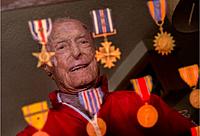Comments (0)
Add Comment
-
Views: 204
It took me a while to wrap this one up but it was well worth it! -
Views: 189
Take your time to get the tight panel fit to the fuselage. -
Views: 199
Elevator horn -
Views: 192
Rudder horn -
 Views: 190
Views: 190
Servo bay has lots of room -
 Views: 201
Views: 201
A young Jim Wiseman with his Windfree -
 Views: 190
Views: 190
-
Views: 188
Mark Smith's Thermal Wax
-
 Views: 233
Views: 233
-
 Views: 284
Views: 284
Steve George and his winning Atomic with my Ava Pro. I should have flown my Atomic this weekend. -
Views: 299
New boat ramp for float planes -
Views: 275
Upper landing area was nice and green! -
Views: 313
New runway is super smooth. -
Views: 324
Barn area saved the day in the blistering heat. best investment we ever did. Sure beats the old circus tent we used to use. -
Views: 293
Karl sticks the landing! -
Views: 304
Woody winner Steve George after his very hard weekend in in the heat
-
Views: 232
This is how I will always remember Jimmy -
Views: 243
These two loved to kid around with each other. Steve George always called him Sweet Potato due to the long standing inside joke they had together -
Views: 240
Two of the best people I have known. I will always miss them. -
 Views: 230
Views: 230
Always there as a trusted timer. His look is a classic - What are you doing so far out and low? -
Views: 230
John Barr and Jim paired up at Fresno with his Cloud Teaser -
Views: 228
Jim all smiles as he nailed a flight therefore Closing the Gap on his year end chase at SWSA -
Views: 241
My Aquila with Jim -
Views: 229
Another classic Bubbles at the CVRC Bent wing
-
Views: 263
From the winches to the north basin. See the water? -
Views: 257
Under the Pavilion -
Views: 260
A view to the east on an early morning round -
Views: 255
Steve and Keith with their winning machines -
Views: 281
Keith and Jason after our 'cross country' four off field retrievals -
Views: 271
My score card after all the open RES rounds. That never happens.
-
 Views: 323
Views: 323
Tim Renuad, Art Chimelewski, Myself, and Jason George prior to flying Sunday's task -
Views: 308
A little show and tell about how large the Explorer Big Flaps are. BF on the left; LF on the right -
Views: 312
Explorer Big Flap on the left; Little flap on the right -
 Views: 346
Views: 346
After all the contact with my Explorer Tim Johnson made his Ultima fly back to the grass landing area. Great job Tim! -
 Views: 307
Views: 307
Look Ma no rudder! -
Views: 314
Another BF span shot -
Views: 314
And the LF span shot -
 Views: 298
Views: 298
Morning sky on Sunday. Such a pretty place to fly.
-
Views: 337
Steve's beautiful Corvette -
 Views: 342
Views: 342
I am so fortunate to have Steve as a friend. I never expected to drive his car. Thank you! -
Views: 334
The classic thrown down between two LSF Level 5's about to take same. Killer and Aquila were ready to go. -
Views: 346
Uh Oh - killer has a forgotten field repair! It works just fine. -
Views: 341
A proud Aquila with its special award. -
Views: 339
This one if for you Adam. Your an amazing person! -
Views: 343
I'll proudly display this Trophy with my final LSF Level 5 accomplishment plaque. Such a nice touch. Thank you again Adam -
 Views: 334
Views: 334
Thank you Tim for all the tricks and tips!













